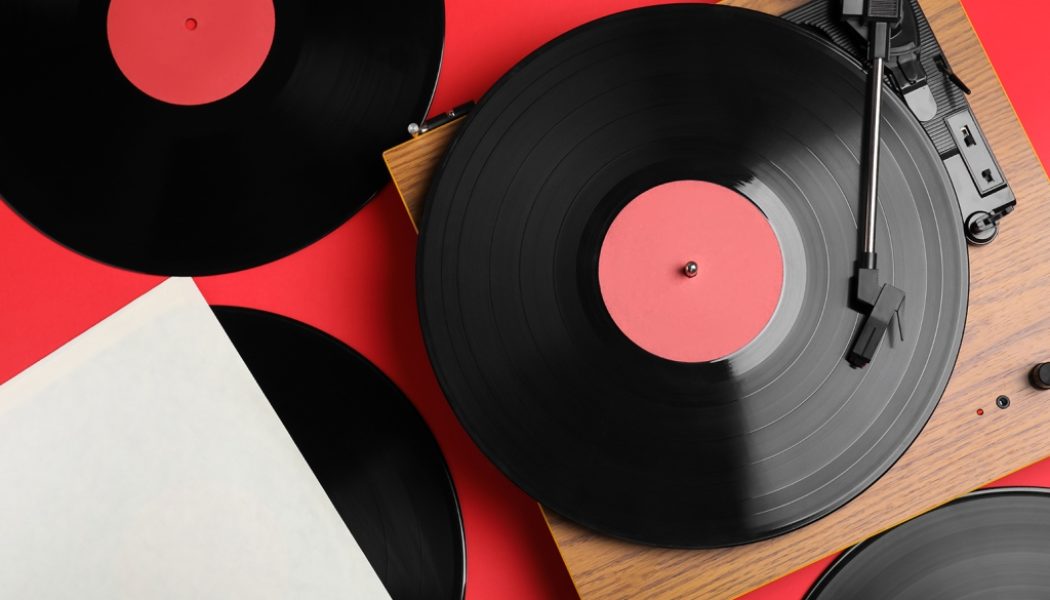
As far as albums go, 1978 was one for the record books. The Saturday Night Fever and Grease soundtracks topped the Billboard 200 album chart for a combined 36 weeks. Fleetwood Mac’s Rumours, released in 1977, was the No. 1 album in the U.S. the first two weeks of the year. Billy Joel’s 52nd Street topped the chart for the final seven weeks of the year. The Rolling Stone’s Some Girls and Boston’s Don’t Look Back each topped the chart for two weeks.
It was also a notable year for another reason: In 1978, vinyl records were more expensive than any other time since the RIAA began tracking sales in 1973. That year, the average retail sale price of a vinyl EP/LP was $7.32 – equal to $30.18 in today’s dollars when adjusted for inflation. That was the second-highest vinyl sales year in U.S. history at 341.3 million units, behind 1977’s tally of 344 million.
For comparison, the average average EP/LP sale price in 2021 was $25.19.
The bad news for vinyl lovers is the 1978 record could soon fall. The average EP/LP sale price will likely rise in 2022 because pandemic-related supply chain problems have caused input prices and freight to rise dramatically. At the same time, manufacturing capacity remains strained even though new vinyl presses have gone online in recent years to meet consumers’ growing appetite for physical records. With strong demand and tight supply, companies have little incentive not to raise prices. Universal Music Group did just that in May when it raised the wholesale price on 2,400 vinyl titles — half of them cost $19 or higher. Warner Music Group raised the price on 600 vinyl titles in Oct. 2021.
According to basic economic theory, if demand for a product increases, prices will rise until companies increase production. Then, if supply increases to meet the higher demand, prices fall back to their previous level. The results of shifts in both supply and demand are more units purchased at an equal or similar equilibrium price.
Vinyl records haven’t always followed the basic laws of supply and demand, however. In the ’70s, as vinyl demand rose, prices increased, too. From 1973 to 1977, unit sales grew 22.9% and the inflation-adjusted sale price rose 5% (49% without adjusting for inflation during that period of high inflation rates). In the decade after unit sales peaked in 1977, sales volume fell by 69% while the average inflation-adjusted price dropped nearly 38% to $17.76 ($7.41 unadjusted).
Vinyl got cheaper as demand plummeted and consumers purchased more cassettes and CDs. The average EP/LP sale price hit an inflation-adjusted low at $11.35 in 1992 with sales of just 2.3 million units (the unadjusted price of $5.87 was the lowest since 1974). U.S. consumers bought 407.5 million CDs that year, surpassing the single-year vinyl EP/LP sales record of 344 million units set in 1977.
Today’s vinyl buyer might feel pinched, but inflation-adjusted vinyl prices haven’t risen much since unit sales bottomed out at 900,000 in 2006. As manufacturing capacity increased dramatically, sales increased more than 44 times to 39.7 million units in 2021. Without adjusting for inflation, the average EP/LP sale price rose 44.4% from $17.44 in 2006 — but factoring in inflation that’s up just 7.4% from $23.44 in 2006 to $25.19 in 2021.
[flexi-common-toolbar] [flexi-form class=”flexi_form_style” title=”Submit to Flexi” name=”my_form” ajax=”true”][flexi-form-tag type=”post_title” class=”fl-input” title=”Title” value=”” required=”true”][flexi-form-tag type=”category” title=”Select category”][flexi-form-tag type=”tag” title=”Insert tag”][flexi-form-tag type=”article” class=”fl-textarea” title=”Description” ][flexi-form-tag type=”file” title=”Select file” required=”true”][flexi-form-tag type=”submit” name=”submit” value=”Submit Now”] [/flexi-form]










Tagged: Analysis, business, Business news, entertainment blog, Finance, music blog, Retail, Vinyl